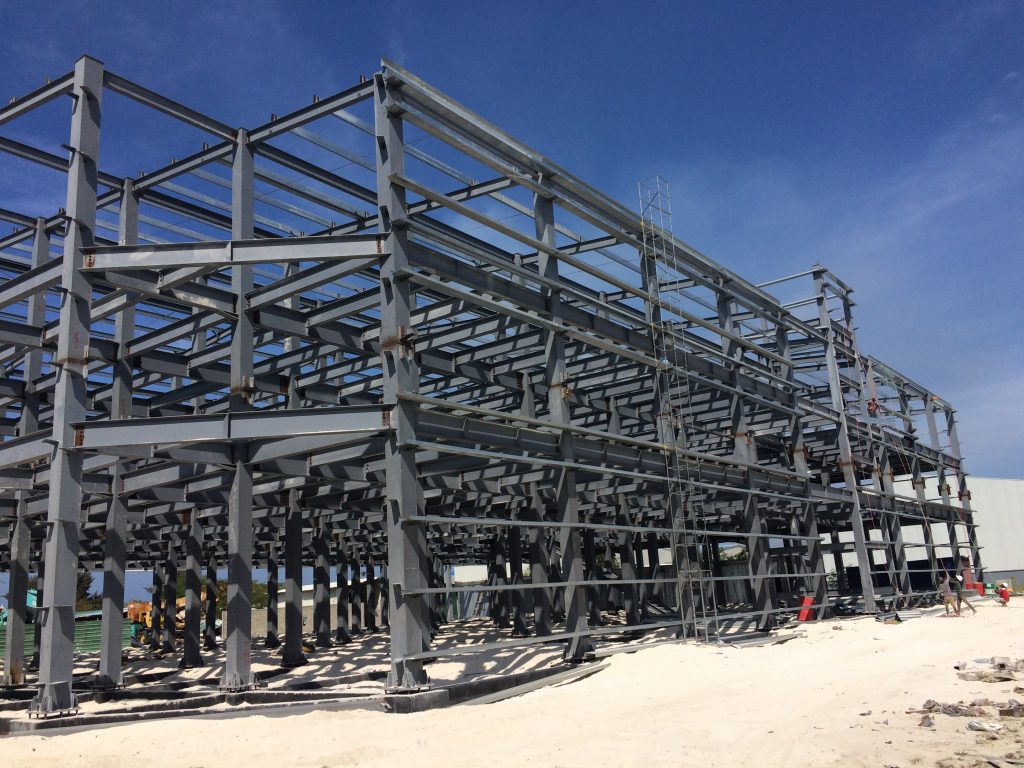Following full-scale static and dynamic load testing validating a new panelized wall system design, building code officials have adopted an amendment increasing allowable heights for snap-lock insulated sandwich panels. The changes stem from a research initiative led by building product manufacturer Lida Group evaluating advanced composite steel panel technology for noncombustible mid-rise construction.
Traditionally limited to one-story applications due to lack of seismic validation, the code revision will facilitate wider use of snap-lock panels in multi-level wood-frame and light steel buildings up to 85 feet tall based on testing credentials. This enables expanded modular building markets and benefits owners through constructability, energy and durability advantages over site-built alternatives according to Lida Group.
Lida Group’s newly tested panel system assembles lightweight composite insulated panels using steel skins mechanically coupled with an inward-facing snap action. This interlocks panels securely without need for wet seals or thermal breaks at connections, optimizing thermal and water performance. R-30 fiberglass insulation provides continuous insulation within a ventilated rainscreen cavity.

As part of code adoption, researchers at the University of Illinois Structural Engineering department conducted rigorous physical verifications at full scale under the direction of lead engineer Dr. Megan Flannery. Testing subjected representative panelized wall sections up to 30 feet tall to static and dynamic lateral loading, impact resistance testing and fire endurance assays well beyond expected design loads and code minimums.
Computerized hydraulic actuators applied lateral forces simulating seismic and wind loadings correlated to IBC seismic design levels and ASCE 7-16 extreme wind loads. Deflection, acceleration and internal shearing were intensively monitored with no observed distress, failures or detachment of panels from framing up to three times design level ground motions.
Impact resistance testing involved propelling suspended 300-pound masses at panel faces from varying distances without compromising integrity – a test beyond typical standards. Fire tests exposed panels to direct flame impingement and elevated temperatures exceeding requirements, with no flame spread or structural failure observed for over 4 hours as rated assemblies.

Due to validation through rigorous physical simulation replicating real-world hazards, code officials unanimously voted to allow constructing buildings using Lida Group’s system up to 85 feet tall in Seismic Design Categories A through D. This expands the commercial viability of prefabricated panels competing effectively against traditional stick-built and masonry alternatives in mid-rise construction for the first time.
Adoption further enables modular and panelized deliverables integrated with structural insulated panels in off-site prefabrication for multi-story applications beyond previous site-built constraints. Owners and developers gain expanded options for economical, high-performing vertical construction meeting all code-mandated safety standards. Residents also benefit from superior comfort, air quality and durability versus conventional methods according to Lida Group.
The tests establish seismic and weather safety credentials for a new generation of advanced panel-based building solutions according to code officials and researchers involved. By overcoming previous single-story limitations through innovative verification, involved parties demonstrate how performance-based validation can expand noncombustible modular construction markets with public safety protections in place. This empowers greater sustainability and efficiency gains through industrialized building practices.

In summary, through full-scale physical testing programs led by university researchers, building officials have adopted code changes allowing increased height use of a mechanically-joined insulated composite panel system designed by Lida Group. Rigorous testing regimens validated the panel wall assemblies to 85 feet tall satisfactorily resisting seismic, wind, impact and fire loads – enabling broader application in multi-level modular, panelized and site-built construction markets. The validators set a precedent for advancing innovative materials approval through robust performance criteria.

Related news
-
Architects Specify Standing Seam Roofing and Siding System from Lida Group for New Food Distribution Facility Requiring High Thermal Performing Enclosures
2023-12-27 16:05:16
-
Town Approves Permits for Lida Group to Construct Temporary Non-Combustible Shelter for Displaced Residents Using Portable Kaiser Panel Building Kits
2023-12-27 15:41:09
-
New Factory Opens with Capacity to Double Output of Engineered Metal Components Produced for Lida Group's Component Panelized Construction Systems
2023-12-27 15:28:37
contact us
- Tel: +86-532-88966982
- Whatsapp: +86-13793209022
- E-mail: sales@lidajituan.com


